Announcer:
The following program is a PBS Wisconsin original production.
Frederica Freyberg:
About-face decisions waiver over whether to impeach the state Supreme Court’s newest justice, and heated debate at the Capitol ensues over bills that will impact people who are transgender.
I’m Frederica Freyberg, tonight on “Here & Now,” senior political reporter Zac Schultz has the latest on threats to impeach Justice Janet Protasiewicz. Then a look at gender-affirming care from a medical point of view. Scholars from a federal program challenge calls to de-fund diversity, equity and inclusion programs, and the next installment of Wisconsin in Black and White: The Racial Wealth Gap. It’s “Here & Now” for October 13.
Announcer:
Funding for “Here & Now” is provided by the Focus Fund for Journalism and Friends of PBS Wisconsin.
Frederica Freyberg:
We begin tonight with major movement in an important case affecting voters across the state. The lawsuit over Wisconsins current legislative boundary maps is now being fast-tracked in the Wisconsin Supreme Court with oral arguments set for November.
That’s after liberal Justice Janet Protasiewicz declined to recuse or step aside from the case and the liberal majority on the court ruled to take up the redistricting lawsuit. Republican Assembly Speaker Robin Vos had moved to pursue impeaching Protasiewicz over statements she made during her campaign that the legislative maps are rigged and unfair. In her decision to reject recusing, Janet Protasiewicz wrote, “No other justice has decided that they must recuse, even though their prior writings, including from just last year, might indicate firm preconceptions of certain issues in this action. And if prejudgment is the concern,” she wrote, “their writings are just as relevant as my campaign remarks.” Vos had asked former conservative justices whether impeaching Protasiewicz was possible. One of them, David Prosser, told the speaker not to try saying, Impeachment is so serious, severe and rare, that it should not be considered unless the subject has committed a crime or the subject has committed indisputable corrupt conduct while in office.” In turn, Robin Vos released a statement on the matter saying, “Justice Protasiewicz should have recused herself. We think the United States Supreme Court precedent compels her recusal and the United States Supreme Court will have the last word here.” Conservative Justice Rebecca Bradley also has her eye on the persuasion of the nation’s high court. In her dissent over the Wisconsin Supreme Court taking up the redistricting lawsuit, Bradley wrote, “Protasiewicz’s failure to recuse from this case despite her blatant bias should be reviewed by the United States Supreme Court before Wisconsin taxpayers are forced to foot the bill for a redistricting do-over.” Speaker Vos says moving to impeach Justice Protasiewicz is not off the table. Here to talk more about this, senior political reporter Zac Schultz at the Capitol. Hi, Zac.
Zac Schultz:
Hey, Fred.
Frederica Freyberg:
So now Vos is tying possible impeachment to how she rules on the case, that she did not recuse herself from, and saying that the U.S. Supreme Court could be the decider over all of this. As we heard from Justice Rebecca Bradley, he’s not alone in wanting this to go all the way up.
Zac Schultz:
Well, at this point, that’s the only place they can go because the Wisconsin Supreme Court is controlled by liberals who would obviously not rule in favor and would support Janet Protasiewicz in her recusal decision. So they have to go to the U.S. Supreme Court, either to overrule her decision not to recuse or to overrule any decision that would come down from the majority in the Supreme Court in Wisconsin about creating new redistricting maps. After all, it was the U.S. Supreme Court last time who kicked the original case back to the Wisconsin Supreme Court, which then put in place those conservative maps that we are under. Remember the first time around, the Supreme Court with Justice Hagedorn, sided with Governor Evers and chose democratic maps until the U.S. Supreme Court said no.
Frederica Freyberg:
How surprising was it that former Justice Prosser and another conservative former justice told Vos that there should be no effort to impeach Protasiewicz?
Zac Schultz:
Well, these are conservatives from the Supreme Court, but they’re still former members of the Supreme Court. So it’s not surprising they would try and read the law in its plain language and it clearly talks about contempt in office and corrupt conduct in office. All these comments, all these actions came on the campaign trail before Janet Protasiewicz was Justice Protasiewicz. So in that sense, it’s pretty clear that that’s how it should have been read. If you were a cynic, you would argue, well, you could always assume you could find any justice somewhere to try and say what you want it to say. So I think you could also read into that that Speaker Vos simply doesn’t have the votes right now in the Assembly to impeach, if he wanted to, and that he would need support from outside places like former justices to say, yes, you should do this, in order to bring the rest of this caucus along.
Frederica Freyberg:
There was also the argument that Protasiewicz should step aside because she got campaign contributions from the Democratic Party of Wisconsin but the party isn’t a party in the case. Does that hold up in terms of impeachment?
Zac Schultz:
In terms of impeachment, that’s unclear. That was part of the campaign. That wasn’t part of her time in office, so it shouldn’t affect impeachment, but it was something that she spoke to in her recusal, in her decision not to recuse from these cases, where she said the amount of money that was contributed by a non-party to a case that wasn’t before her at the time the money was contributed should have no impact on her ability to judge this case. She pointed to numerous, other candidates, former conservatives on the Supreme Court who received large amounts, proportional amounts of campaign finance funding from conservative or liberal interest groups and saying that they’ve all about influenced by this but no one else has recused so she shouldn’t have too either.
Frederica Freyberg:
What was Justice Protasiewicz referring to when she said prior writing of other justices might indicate firm preconceptions on the redistricting issue?
Zac Schultz:
Well, remember, redistricting was just before this court in the last session and everyone wrote on this. They wrote their own dissents. They wrote the majority opinion. So everyone is on the record in terms of how they did decide this case. Now, these appeals are based on slightly different issues that they say weren’t addressed at this time. The conservatives say, well, that’s exactly why we don’t need to take this. We just decided it. This is the precedent we should be going on until 10 years from now and the liberals on the court are saying, no, this is something we can look at. It’s a new angle. Of course it helps when they have the majority so they can say that. But everyone wrote and stated where they stand on a lot of these issues so that could be the basis of preconceptions, but that’s also why the Supreme Court typically doesn’t decide the same case multiple sessions in a row once they decide it, it stands unless there’s a new angle, which is what these groups are saying is the reason why the court should take this issue up now.
Frederica Freyberg:
Back to this issue of recusal with just about a half a minute left, what happens if Janet Protasiewicz was compelled in the end by the high court to recuse?
Zac Schultz:
Well, if she’s not on it, then there’s only six justices left. They’re split 3-3. Justice Hagedorn would be a swing vote, but we saw from his dissent in the decision to take the case that he doesn’t think the court needs to revisit this issue, so more likely than not, the issue would be deadlocked and nothing would happen.
Frederica Freyberg:
Zac Schultz, thanks a lot.
Zac Schultz:
Thank you, Fred.
Frederica Freyberg:
Impassioned testimony at the Capitol in recent weeks culminated in heated Assembly floor debate over legislation targeting transgender children. One of the bills prohibits minors from receiving gender-affirming medical care in the form of hormone treatments or surgery. The Republican-authored legislation sparked these words from Assembly Speaker Robin Vos.
Robin Vos:
So just because some people in science today say that this is settled that we are going to mutilate children before we allow them to get a tattoo, before they decide on many things that we say as a society they cannot decide. And for all of you who have sponsored the bill to say we need to have 17-year-olds treated as children because they can’t be admitted to adult court because their brains aren’t formulated, give me a break! So you say that kids aren’t old enough to know right and wrong when they commit a crime, but somehow permanent bodily changes, that, when you’re three years old, you’ve got it all figured out. This is baloney!
Frederica Freyberg:
To hear from a medical point of view, we speak with Bill Keeton, chief advocacy officer at Vivent Health, a clinic that focuses on serving LGBTQ clients. Bill, thanks very much for being here.
Bill Keeton:
Thank you for having me.
Frederica Freyberg:
So as to the speaker’s comment that children as young as three are undergoing permanent bodily changes, is that accurate?
Bill Keeton:
To the best of my knowledge, Ive not heard of any instances where someone that young has been in a position where they’ve had, whether it’s gender reassignment surgery or taking things like hormones or puberty blockers to treat gender dysphoria like what’s being discussed today.
Frederica Freyberg:
What does medically recognized gender-affirming care involve for children under the age of 18?
Bill Keeton:
It involves a lot of different components. Probably first and foremost is the really intentional engagement of that individual’s parents with a team of providers who are really looking at what is in the best interest of the health and well-being of that child. That’s going to include things like talk therapy and traditional mental health. It might include things like psychiatry. And if the team comes together, the parent or parents in this case come together with the team of providers and their child to determine that something like gender reassignment surgery is necessary, then that’s the course of treatment that’s going to be followed and sought out. There’s going to be a lot of consultation, a lot of discussion, a lot of education of the parent and the child about what this is going to mean for that individual for the rest of their lives and it’s not the standard course. I shouldn’t say it’s not the standard course. It’s not the only course. There are a number of different approaches to helping support folks who are living with — not feeling like their physical body matches how they feel about themselves.
Frederica Freyberg:
But in terms of that gender reassignment surgery, I mean, is that something that happens, you know, in young teenagers? Or even older ones? Or is it generally something that would be when they are adults?
Bill Keeton:
The research I’ve seen on this and the literature Ive seen on this really lends itself to the understanding that this is something that happens later on in an individual’s life. I think the medical community, providers in this space really recognize that they are taking a significant step with this patient and they want to make sure that they’re in a position to make that decision fully from a well-informed position.
Frederica Freyberg:
But this kind of care would include puberty-blocking drugs or hormones, and if so, at what age and under, again, what conditions would these be afforded?
Bill Keeton:
There’s a number of different approaches. It’s individualized for each one of the patients. There’s no standard on this day, after this many rounds of treatment, we’re going to start treatment “x,” “y,” or “z.” So is it the same in every case? The answer is no. This sort of care is very naturally tailored and individualized for the individual who is seeking it.
Frederica Freyberg:
Because what kind of care and caution do healthcare providers enter into with children and their parents as they go through this course of treatment?
Bill Keeton:
There are a lot of conversations that need to happen, meaningful conversations about what does this mean for the patient. The initiation of things like puberty blockers or hormone therapy, those are not necessarily permanent approaches. They will change the individual’s physiology in some ways so that it more closely represents how that individual experiences their gender, which is an internal, almost psychological sort of thing. And if that changes the ability to withdraw or stop receiving that, will have the impact of bringing that person’s gender expression back towards their physiological.
Frederica Freyberg:
And so in other words, those kinds of drugs are reversible.
Bill Keeton:
Correct.
Frederica Freyberg:
Why does your healthcare practice and others believe that it is injurious to prohibit gender-affirming care for children and for them to wait until they’re 18 to get that kind of care?
Bill Keeton:
Well, I think if we look at something like gender dysphoria and the folks who are seeking this out, it’s not a cosmetic, it’s not an esthetic sort of approach. It’s not a tattoo. This is recognized treatment, developed with protocols, developed by leading providers in this space, the American Psychiatric Association, the American Medical Association, and others, and the idea that someone is experiencing a condition that has treatments available for it that have been rigorously studied and proven to be effective and safe for that individual, to withhold that because of someone’s age seems to be cruel to me in some ways. That’s where the injury comes in. We basically other-ize and stigmatize folks and push them further to the margins of society.
Frederica Freyberg:
Bill Keeton, thanks very much.
Bill Keeton:
Thank you for having me.
Frederica Freyberg:
Governor Tony Evers says he will veto this bill and two others related to transgender sports restrictions.
Also at the Capitol, Republicans could withhold pay raises for state employees over diversity and inclusion positions at the Universities of Wisconsin, but federal dollars continue to fund a program offered at seven of the universities that helps underrepresented students navigate higher education. “Here & Now” reporter Aditi Debnath has more on that program’s impact on the UW-Oshkosh campus.
Dominic Laracuente:
Originally when I went into McNair, I wanted to be a medical illustrator. I wanted to draw pictures for textbooks, those posters you see in doctors’ offices because I really like to draw, but now Im not trying to do that at all. Now Im trying to get a Ph.D. in biotechnology.
Aditi Debnath:
Dominic Laracuente is a UW-Oshkosh McNair Scholar. He just completed the program’s summer research internship which culminates in a public presentation of his findings.
Cordelia Bowlus:
McNair is really a one-stop shop for first generation, underrepresented and low-income students.
Aditi Debnath:
This federally funded scholarship program is deemed a success by those in it. Even as Republicans in the legislature want to prohibit state funded programs aimed at diversity and inclusion. The McNair Program grants its scholars $4,000 to conduct their own research and receive one-on-one mentorship from a faculty member.
Dominic Laracuente:
Research Ill be presenting today is on cyanobacteria in Lake Winnebago.
Aditi Debnath:
Britney Dupree also didn’t know much about graduate school before becoming a McNair Scholar.
Britney Dupree:
This summer I went on more the macro scale and I was looking at prairie restorations and I assessed the success of a prairie restoration that’s right around central Wisconsin.
Aditi Debnath:
The program’s director, Cordelia Bowlus, says McNair is part of a pipeline of programs that helps students from disadvantaged backgrounds be successful in college.
Cordelia Bowlus:
It has a long track record of huge success. It has bipartisan support in Washington.
Aditi Debnath:
Bowlus is referring to federal government funding designated to promote diversity, equity and inclusion in education.
Cordelia Bowlus:
Of the approximately 200 students that have gone through our program in the last 16 years, 60% of them are either in graduate school or have completed graduate school and are in careers.
Aditi Debnath:
This year, UW-Oshkosh will receive more than $260,000 from McNair and is one of seven universities in Wisconsin that offers the program.
Belynda Pinkston:
They’re important because they enrich the university.
Aditi Debnath:
Program coordinator at UW-Oshkosh, Dr. Belynda Pinkston, advises McNair Scholars through each step of the program.
Belynda Pinkston:
We make a concerted effort to focus on providing resources for our scholars and providing an environment in which they feel supported, in which they feel seen and heard.
Aditi Debnath:
Beyond that, programs like McNair give students the space to connect with peers that have similar experiences and inspire the next generation.
Dominic Laracuente:
I think we do a good job kind of of representing what education can do for people and where it can lead.
Aditi Debnath:
His mother, Blanca Juarez, traveled from the Fox Cities to Oshkosh to see his presentation.
Blanca Juarez:
Im a really, really proud mama because I know he’s going with his heart too. He really wants to do it. He wants to clean the lake, and hopefully older students continue with this program and with this project that they chose to study this summer.
Aditi Debnath:
Dr. Pinkston, who once was a first-generation college student, says promoting diversity in higher education is just as beneficial to a community as it is to each student.
Belynda Pinkston:
And so it’s not just intrinsic, what am I going to get out of this. It’s about how I can give back, and we help cultivate that desire in them to give back.
Aditi Debnath:
For Britney Dupree and her mother, McNair really is about enabling the next generation.
Linda Will:
I am a person without school. I would support her in any way. I am so proud of her and what she’s achieved so far.
Aditi Debnath:
For “Here & Now,” Im Aditi Debnath.
Frederica Freyberg:
Tonight, we continue our series of special reports on race with Wisconsin in Black and White in partnership with the Nehemiah Center for Urban Leadership Development. Last week, we looked at the history of racially restrictive covenants and redlining which forced Black people into old, dilapidated housing. Tonight, the legacy of urban renewal programs and the protest they sparked for fair housing. Here’s reporter Nathan Denzin with Wisconsin in Black and White: Racial Wealth Gap.
Milwaukee resident:
People here are suffering now. What do you wanna do about it now? What are you gonna do about it now? How many homes do you have available now for us?
Nathan Denzin:
Bulldozers rolled into Milwaukee in the 1960s, leveling Black neighborhoods in the name of urban renewal. The projects often razed successful Black neighborhoods like Bronzeville in downtown Milwaukee.
Theresa Garrison:
Well, you had homes with families and with kids, and we were all just playing around.
Nathan Denzin:
Theresa Garrison has lived in the Bronzeville community for 70 years.
Theresa Garrison:
So I’d say it was family-oriented and everybody knew everybody.
Nathan Denzin:
Bronzeville enjoyed a flourishing business district in the early 1960s, from banks to movie theaters to grocery stores.
Theresa Garrison:
It was just a booming shopping center.
Nathan Denzin:
But in the mid-1960s, the federal government started giving grants for cities to update infrastructure. The goal of urban renewal was to construct new housing and modern interstates. Those projects often destroyed Black neighborhoods in the process.
Documentary narrator:
Fred Durra and his family have lived in this house for eight years, but they live in the K3 urban renewal area and they have to move now. There are 13 of them, and they are Black and poor, so they won’t be able to find a decent home on their own.
Theresa Garrison:
As far as urban renewal, I’ll just say it was urban tragedies.
Nathan Denzin:
In just eight years between 1960 and 1968, more than 7,500 homes and businesses were demolished in Milwaukee. Interstate 43 was the largest and most visible urban renewal project in Milwaukee and was built directly through Bronzeville.
Ranell Washington:
The addition of I-43 decimated the neighborhood.
Elmer Moore, Jr.:
Friendships that were very close to having a family connection were disrupted and destroyed, and a lot of families never recovered.
Nathan Denzin:
Elmer Moore, Jr. and Ranell Washington play critical roles in the Wisconsin Housing and Economic Development Authority.
Elmer Moore, Jr.:
What does that do to everyone else’s sense of security? I wouldn’t be able to sleep that night, thinking, “What are they gonna do to my home next?”
Ranell Washington:
Everybody deserves to have a house.
Theresa Garrison:
When they start tearing a community apart, there was nothing to do. You didn’t have anything.
Nathan Denzin:
The Black community was now facing three forms of discrimination at once. Restrictive covenants prohibited them from living in certain areas, redlining prevented them from getting mortgages, and urban renewal destroyed their neighborhoods.
Kurt Paulsen
Black households that were displaced by highways and urban renewal had limited housing options in the city because of discrimination and exclusionary zoning in the suburbs.
Nathan Denzin:
Kurt Paulsen is a historian of urban planning at UW-Madison, who says decades of discrimination built to massive protest.
Kurt Paulsen
No surprise that you get significant political pushback and rebellion amongst African-Americans in disinvested neighborhoods.
Dr. Christy Clark-Pujara:
We tend to think about the civil rights movement, like the institution of slavery, as something that is uniquely southern, and it was not.
Nathan Denzin:
Dr. Christy Clark-Pujara, a UW-Madison history professor, also works with the Madison organization Nehemiah. She’s an instructor in its “Justified Anger: Black History for a New Day” course. The nine-week course teaches the community about race, history, and justice.
Dr. Christy Clark-Pujara:
You can just look at the civil rights struggle for open housing, for instance, in Milwaukee.
Nathan Denzin:
The pushback in Milwaukee started in the 1960s when Vel Phillips was elected to the city council. Phillips was both the first woman and the first Black person elected to a city office. She led the charge to desegregate Milwaukee’s housing.
Vel Phillips:
These cats are just too dumb, just too dumb to know when they have something going for ’em.
Kurt Paulsen
And they argued in favor of reinvestment in Black neighborhoods, but also what we today would call fair housing or open housing.
Nathan Denzin:
Fair housing is the idea that discrimination of any kind in the sale or rental of housing should be prohibited. When Phillips first introduced her fair housing ordinance in 1962, the rest of the council overwhelmingly rejected it.
Kurt Paulsen
It was one of the first proposed in the country and it went down to defeat 18 to 1. Only Vel Phillips voted for it.
Protester:
Y’all have done this #### for over 200 years, telling us what felt good for us.
Nathan Denzin:
Over the next four years, the ordinance was shot down four more times, each time by the 18 to 1 margin. By the summer of 1967, Milwaukee reached its boiling point. A group of young Black activists decided to rally their community around a common goal. Their mindset:
Reggie Jackson:
We are going to march and demand that the local government, the city of Milwaukee, passes a fair housing ordinance that has some teeth to it.
Nathan Denzin:
Reggie Jackson is a community leader in Milwaukee.
Reggie Jackson:
So they marched for 200 consecutive days. The first two days they marched, they were met crossing this bridge in Milwaukee called the 16th Street Viaduct, which separates the north side from the south side. They were met by an angry crowd of thousands of white people, throwing bricks and bottles and bags of feces.
Nathan Denzin:
Despite the angry white crowds, protestors kept up the pressure.
Reggie Jackson:
Anybody that knows anything about the weather in Milwaukee, marching in December, January, February when it’s bitterly cold, snow, blizzards, all that stuff, ice storms, they continued to march.
Nathan Denzin:
Protests continued until March 1968. Less than a month later, Dr. Martin Luther King, Jr. was assassinated in Memphis. As unrest grew after the murder of Dr. King, the federal government felt pressure to pass an open housing law.
Reggie Jackson:
The federal government finally passed the Federal Fair Housing Act a week after Dr. King’s assassination.
Kurt Paulsen:
But that’s after 40 years of segregation. And a law prohibiting discrimination does not address the deep structure of segregation that was already built into the urban landscape.
Nathan Denzin:
As an expert on the deep and lasting scars of discrimination and forced segregation, Clark-Pujara says understanding that past is critical to working towards a better future.
Dr. Christy Clark-Pujara:
So now we’re in a situation where things are very lopsided, but we can address them as a society if we choose to.
Nathan Denzin:
For Here & Now, I’m Nathan Denzin.
Frederica Freyberg:
This reporting launched with a one-hour Wisconsin in Black and White prime time special from special projects journalist Murv Seymour. To see that special and additional content, go to our web page at PBSwisconsin.org and then click on the news page. That’s our program for tonight. I’m Frederica Freyberg. Have a good weekend.
Frederica Freyberg:
Funding for “Here & Now” is provided by the Focus Fund for Journalism and Friends of PBS Wisconsin.
Search Episodes
News Stories from PBS Wisconsin
12/03/25
Wisconsin Supreme Court agrees to hear lawsuit on whether local jails can hold immigrants for ICE

Donate to sign up. Activate and sign in to Passport. It's that easy to help PBS Wisconsin serve your community through media that educates, inspires, and entertains.
Make your membership gift today
Only for new users: Activate Passport using your code or email address
Already a member?
Look up my account
Need some help? Go to FAQ or visit PBS Passport Help
Need help accessing PBS Wisconsin anywhere?

Online Access | Platform & Device Access | Cable or Satellite Access | Over-The-Air Access
Visit Access Guide
Need help accessing PBS Wisconsin anywhere?

Visit Our
Live TV Access Guide
Online AccessPlatform & Device Access
Cable or Satellite Access
Over-The-Air Access
Visit Access Guide
 Passport
Passport



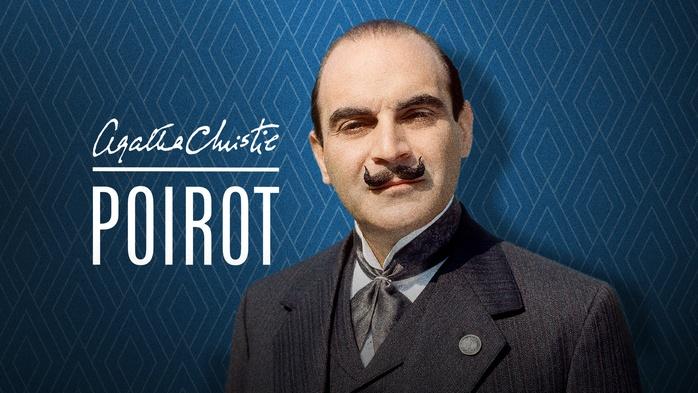



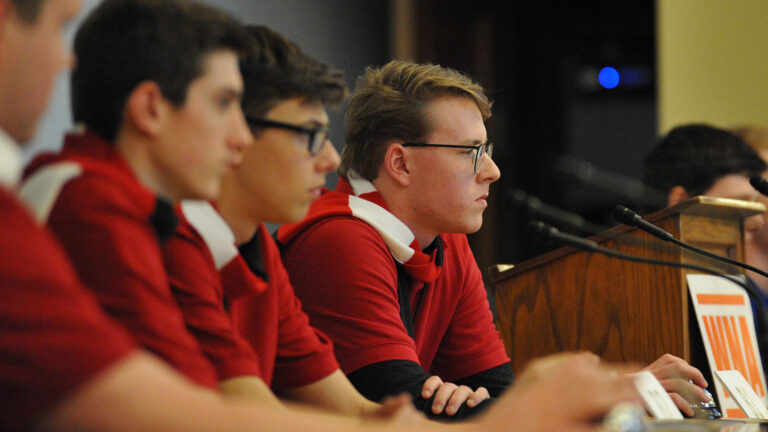
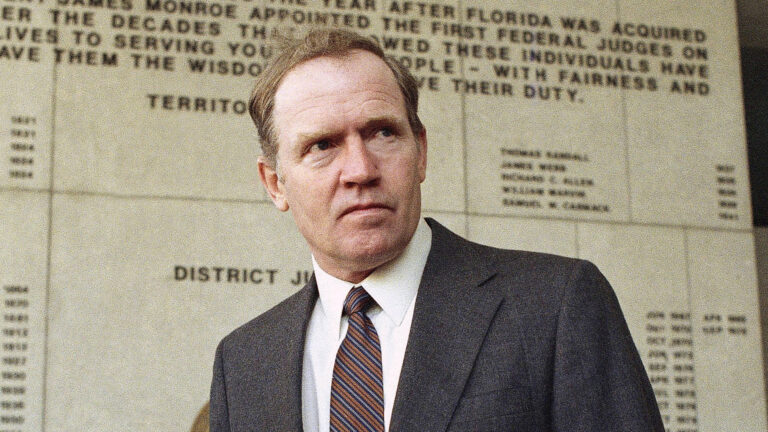

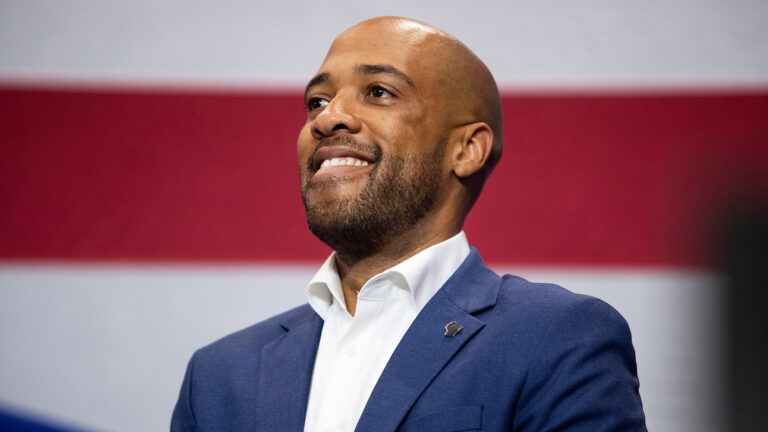
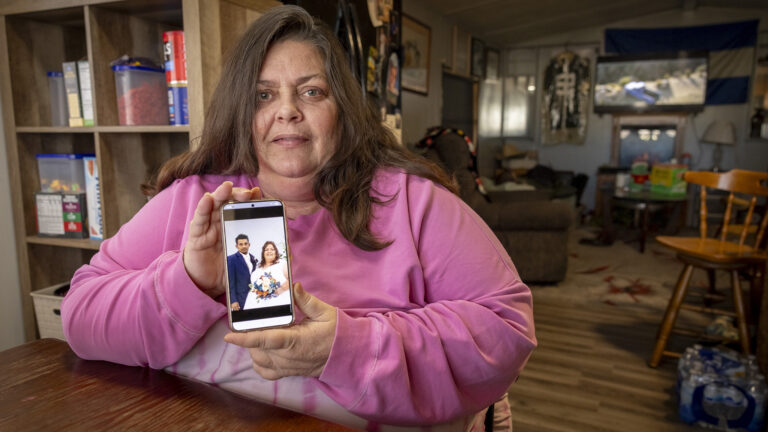
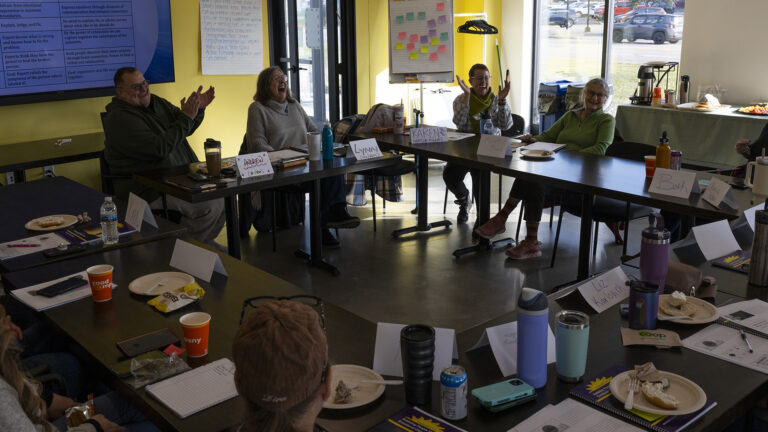
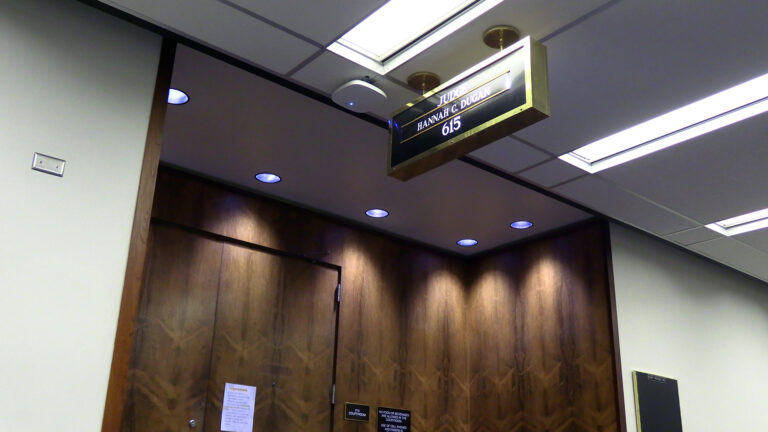

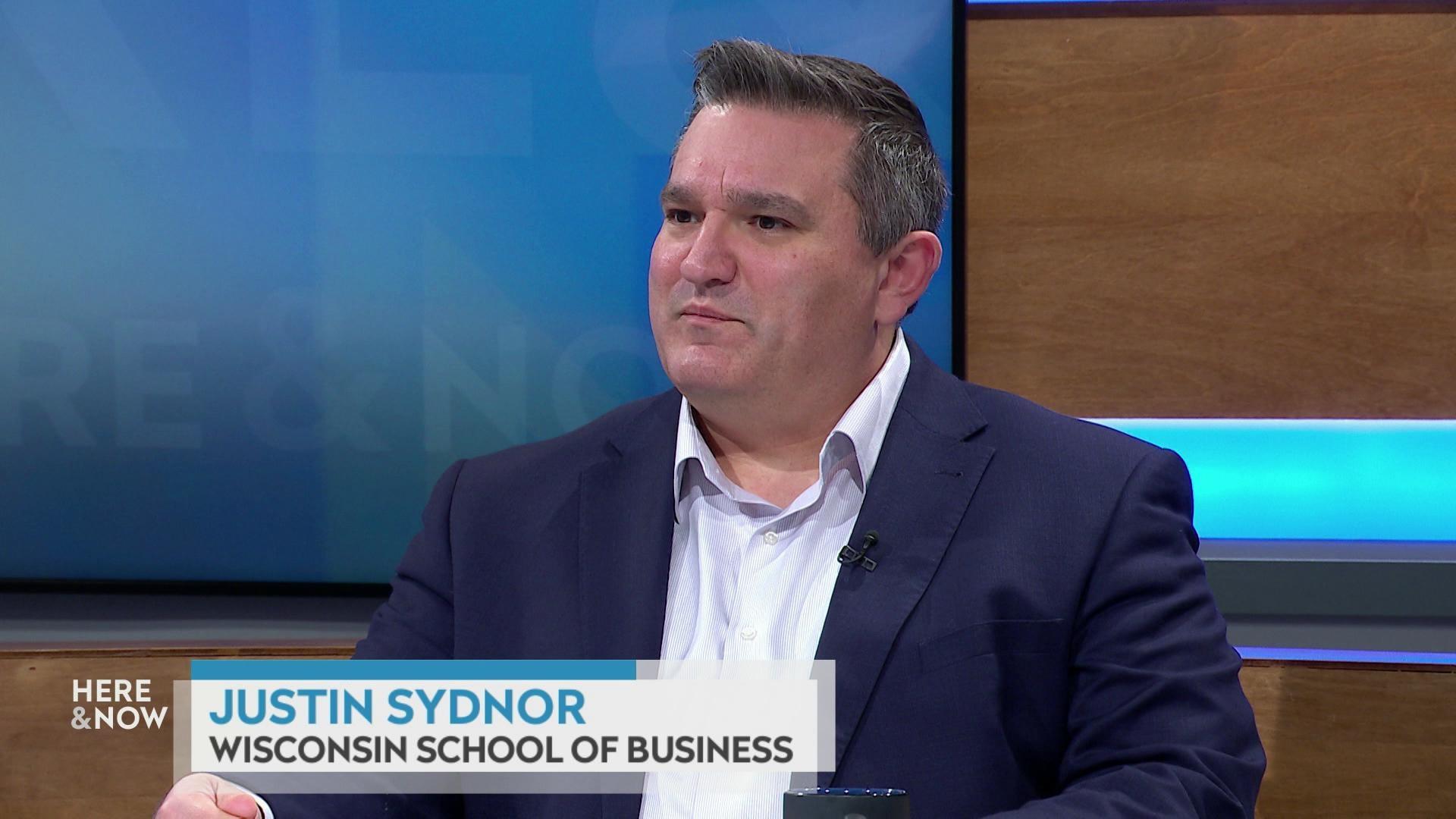


Follow Us